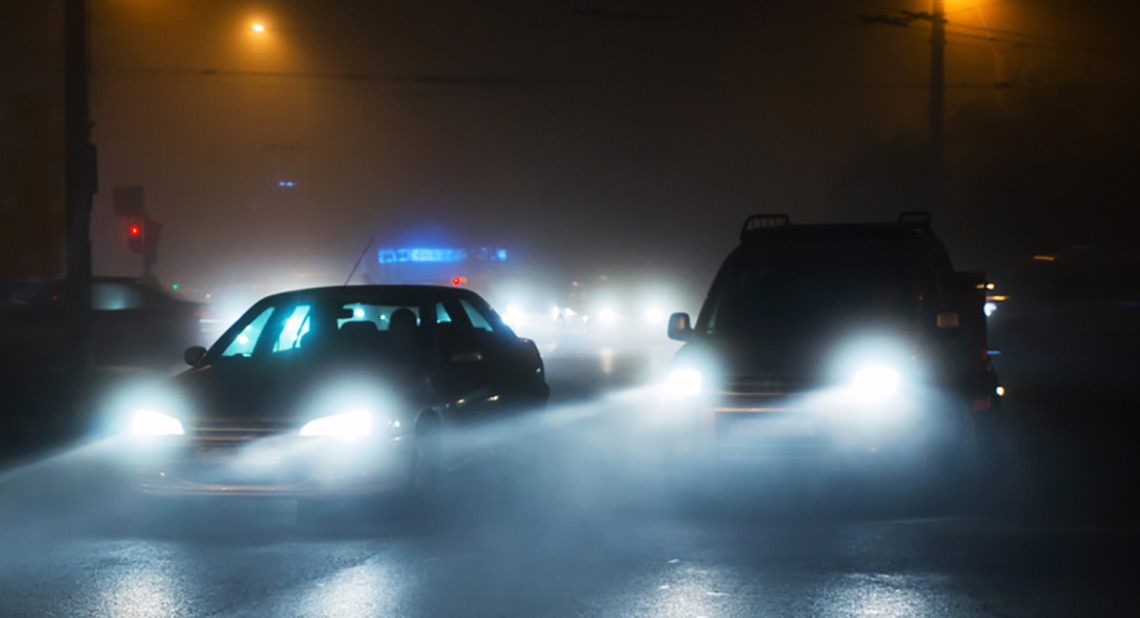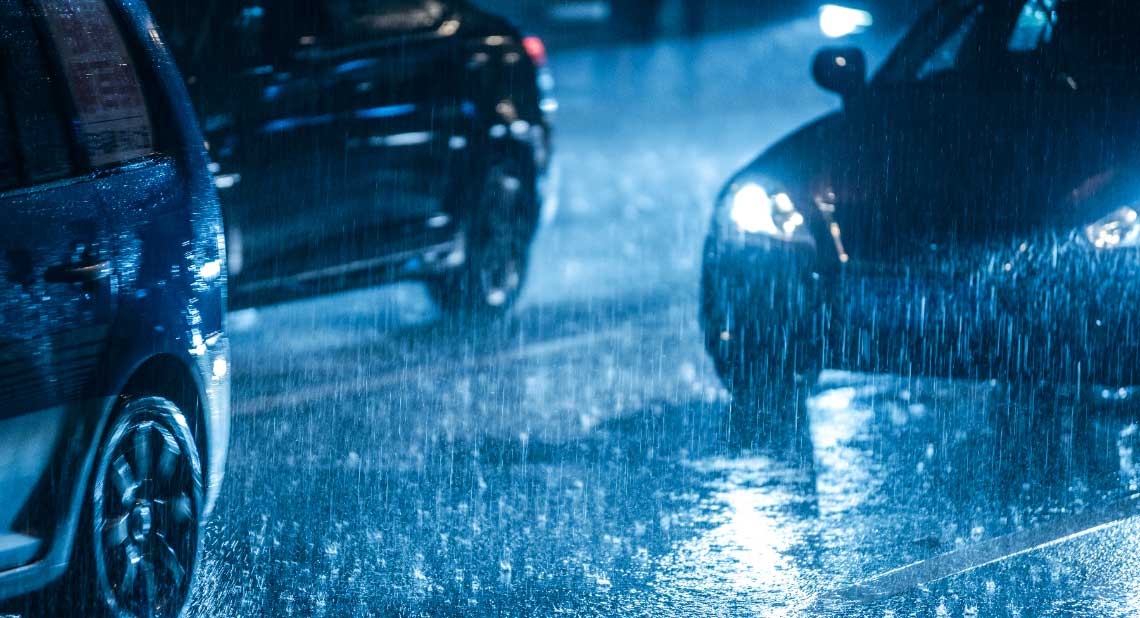No matter how experienced you are, driving in winter can be difficult. Snow, ice, fog, rain, and floods can make it tricky to drive safely.
This guide will help you stay safe when driving during winter weather conditions
Advice on driving in the rain
Guidance for driving in snow and ice
Advice on driving in fog
Tips for driving in strong winds
Advice for Driving in the rain
Turn you lights on
Switch on your dipped headlights. Visibility is reduced in heavy rain, so you need to make sure that other road users can see you approaching.
Slow down and keep your distance
Drive slowly in wet weather to increase your braking distance. It takes double the time for your car to stop in wet weather compared to when it’s dry. In good weather conditions you should keep at least a two-second gap between you and the vehicle in front. In wet conditions, you should double this gap to four seconds. This is Highway Code rule 126.
Keep your windows clear
Humidity can cause your car windows to steam up on the inside. If you have air conditioning in your car, use this to demist your windows before driving. You can also turn up the heater to blow warm air onto the windscreen. If your car has a demisting feature in its climate control, use it. Make sure you keep your windscreen wipers on when spray from other vehicles makes it more difficult to see.
Avoid using cruise control
Cruise control is a convenient feature in a car, but it should not be used in wet weather because it increases your chance of sliding. If your car starts aquaplaning (gliding without any control on a layer of water that gets between your tyres and the road) when cruise control is on, you cannot slow down as quickly. This makes the situation even worse. You can learn more about aquaplaning and how to avoid it on the RAC website.
Be especially aware of pedestrians and cyclists
Be extra cautious of pedestrians and vulnerable road users, such as cyclists. So you’re not caught out by any unexpected movements. For instance, cyclists may swerve to avoid a deep puddle when overtaking. Make sure you give them lots of room and try not to splatter them with even more water.
Watch out for flooding
If the rain is heavy and there’s flooding, be cautious of large puddles, as they may be deeper than you think. If in doubt, turn back. Should your car’s engine cut out after driving through deep water, do not attempt to restart it. This may cause serious engine damage. Instead, turn on your hazard warning lights and seek assistance from RAC Motability Assist.
Guidance for driving in snow and ice
Keep your windows and mirrors clear from snow, ice and frost
Make sure you always leave time to clear it from your windscreen, rear screen, all your side windows, and your mirrors before you set off. Use an ice scraper. A de-icer can help if the ice/frost is hard. Do not use boiling water to melt ice, as it could crack your windscreen. Removing snow from your car’s roof is also important, as it can slide down onto your windscreen.
Keep to main roads if possible
Avoid smaller roads because they’re less likely to have been treated with salt and grit than main roads. Also, there’s a greater chance that the snow will have broken up on main roads because of the greater traffic volume.
Drive carefully and sensibly
Follow the speed limit, brake gently and approach bends slowly. Brake well in advance of bends to prevent your wheels from locking. Drive slowly in a low gear when going downhill. Avoid high revs when driving a manual car to prevent skidding and maximise control. Start off in second gear if it’s slippery, as this will also help reduce wheel slip.
Increase your stopping distance
Leave plenty of space between you and the car in front. According to the Highway Code, your braking distance could be ten times greater than on a dry road. In other words, travelling at 70mph on an icy road could take up to 771m to stop your car. That’s equivalent to about half a mile.
Regain control of your car in a skid
If your vehicle starts sliding sideways, take your foot off the pedals and steer into the skid (for example, if you start skidding to the left, you should steer to the left and try to avoid braking). Only use the brake if you can’t steer out of trouble.
If you get stuck, don’t spin the wheels or rev the engine, you’ll only make the situation worse. Use as high a gear as possible and slowly manoeuvre the car forwards and backwards to creep out gently.
Advice on driving in fog

Use the correct lights
Always use dipped headlights in foggy conditions. Switch on your front and rear fog lights if visibility is less than 100 metres, to help other motorists see you.
Do not turn on your rear fog lights earlier than you need to, because you could dazzle drivers behind you. Do not use full beam because the fog reflects the light back, reducing visibility even further.
Be aware that other road users and pedestrians may not be visible straight away
Be especially aware of other road users and pedestrians, who may not be visible until the last few seconds. If the visibility is too poor, park somewhere safe until it’s clear enough to continue your journey.
Drive slowly and keep your distance
Maintain a slow, steady pace, and avoid sudden braking. Keep your distance from other motorists.
Tips for driving in strong winds
Plan your journey carefully
Avoid exposed roads and try to find a sheltered route without bridges, flyovers and high, flat land.
Reduce your speed
High winds can be dangerous. A sudden gust can unsettle your car. And there may be fallen trees, branches, and other flying debris if the wind is particularly strong. So, driving slowly gives you more chance to be aware of your surroundings, spot any trouble ahead, and take any evasive action, if necessary.
Stay in control
Always hold the steering wheel firmly. Because you’ll need to react quickly if your vehicle is knocked off course. Be especially careful when overtaking high-sided vehicles on dual carriageways and motorways.
Avoid towing
If possible, don’t tow caravans or trailers in gale-force winds. Even blustery winds can cause snaking (when the caravan swings from side-to-side). If the wind picks up, you should slow down or consider taking a break, until the weather improves.
Leave plenty of space
Sudden gusts can catch us all out, so leave extra room for cyclists and motorcyclists. These road users are particularly vulnerable and may veer across the road.
Interested in joining the Motability Scheme?
If you receive a qualifying mobility allowance you can use it to lease a car, scooter, powered wheelchair, or Wheelchair Accessible Vehicle (WAV) on the Motability Scheme.
The Scheme’s all-inclusive lease package is designed to give you value for money and peace of mind. Because, as well as having a brand-new vehicle of your choice, you also get insurance, breakdown cover, servicing and maintenance included in the price you pay.
Learn how it works
Get a free information pack
Related articles
How to avoid your car skidding while driving and what to do if it does
See what’s covered in your car lease
![]()







